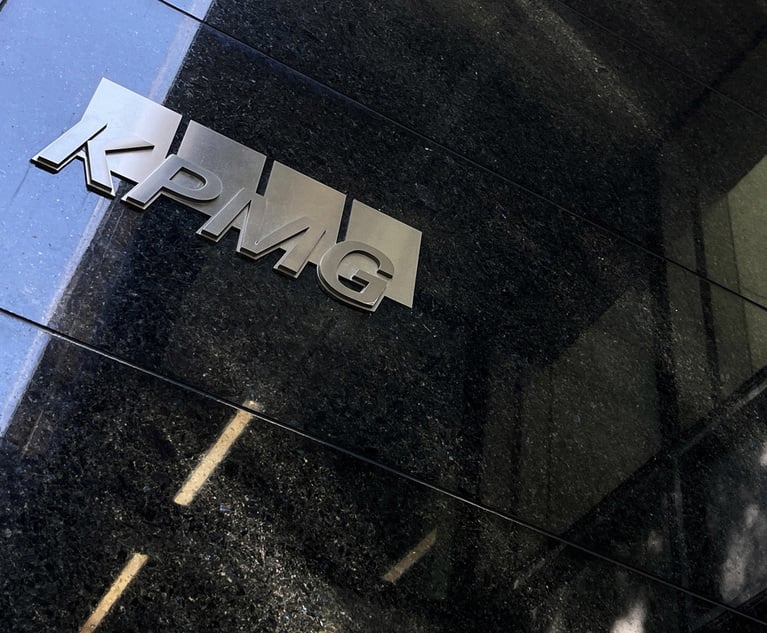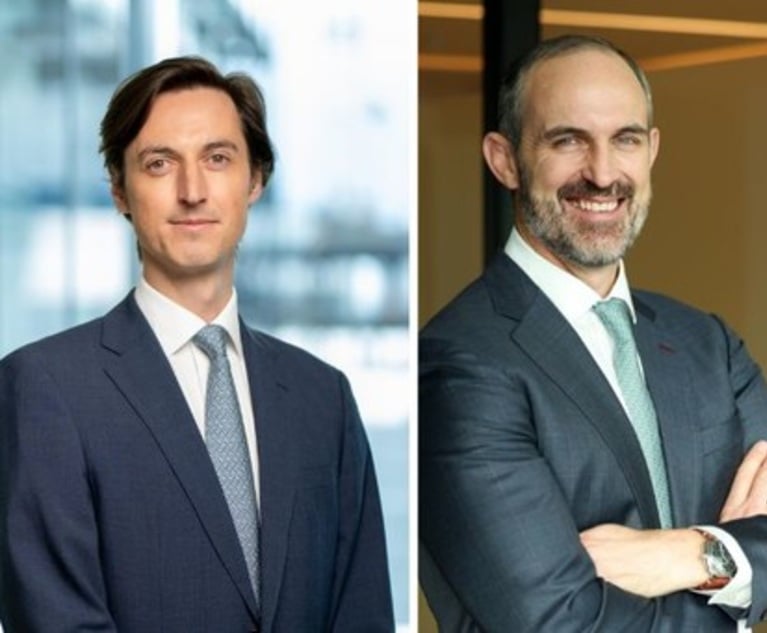Private equity outlook - rays of hope for 2011
During the boom years, private equity investors capitalised on unprecedented liquidity in the leveraged loans market and the application of innovative management techniques to achieve high rates of return. After the uncertainty of the financial crisis which saw activity fall to levels last seen in the mid-1990s, we have seen some signs of recovery over the last 12 months and reports indicate that both the value and volume of European buyouts are starting to increase. The question is whether this apparent recovery is sustainable in the face of continuing economic uncertainty and constraints on capital.
March 29, 2011 at 01:00 AM
4 minute read
During the boom years, private equity investors capitalised on unprecedented liquidity in the leveraged loans market and the application of innovative management techniques to achieve high rates of return. After the uncertainty of the financial crisis which saw activity fall to levels last seen in the mid-1990s, we have seen some signs of recovery over the last 12 months and reports indicate that both the value and volume of European buyouts are starting to increase. The question is whether this apparent recovery is sustainable in the face of continuing economic uncertainty and constraints on capital.
Historically, the period immediately following a downturn has been a time for increased activity. After a couple of quieter years, many private equity investors need to achieve exits to demonstrate returns in the context of new fundraising activity and there is a build-up of 'dry powder' – committed equity that needs to be invested. 2010 saw the initial public offering markets start to reopen for larger assets with a sustainable long-term equity story.
However, the premise of increased activity following a downturn is based primarily on an assumption that sellers will have reduced their valuation expectations during the downturn. On the whole, this assumption has not proved correct over the last 12 months, particularly as distress levels have fallen, and there is therefore often a gap between a seller's value expectations and what a buyer is prepared to pay, particularly in respect of non-trophy assets. From a buyer's perspective, fragile markets and an unpredictable economic outlook mean a conservative approach to projected returns. Successful transactions therefore depend on the buyer being very comfortable with the target's prospects.
As a consequence, we are seeing a greater level of due diligence and analysis of potential value issues among buyers than has been the case in recent years coupled with more hard-fought negotiations and increased sensitivity to abort costs. In terms of pricing structures, we are seeing buyers question the use of a locked box unless the underlying financial information is sufficiently robust. On the sell side, sellers are more focused on well-run processes to maximise value and the need for bidder incentives, such as costs underwrites.
The second constraint to activity levels is that financing remains limited. The wall of leveraged buyout debt to be refinanced over the next few years acts as a constraint on capital to fund new deals. Some banks that have been major lenders to private equity have withdrawn from the market or imposed limits on their exposure to particular sectors or assets. Many assets that are currently in private equity ownership were acquired with debt multiples greatly in excess of those available and buyers are struggling to raise in absolute terms the same level of debt. If transactions are to be completed, this gap needs to be funded. Although we are seeing a variety of techniques employed, including additional equity, alternative debt structures and contingent consideration, it remains a constraint, particularly for those investors who are unable to access a variety of sources of funding.
We are looking to the future with cautious optimism. We expect the signs of a revival in new deals to continue but an uncertain economic outlook, the limited availability of financing and a greater focus on risk will mean that a return to the activity levels seen during the boom years is not likely any time soon.
Christopher Bown chairs the private equity team and Victoria Sigeti is a senior associate at Freshfields Bruckhaus Deringer. For a report on the outlook for the global private equity industry, visit www.freshfields.com/thenewnormal.
This content has been archived. It is available through our partners, LexisNexis® and Bloomberg Law.
To view this content, please continue to their sites.
Not a Lexis Subscriber?
Subscribe Now
Not a Bloomberg Law Subscriber?
Subscribe Now
NOT FOR REPRINT
© 2025 ALM Global, LLC, All Rights Reserved. Request academic re-use from www.copyright.com. All other uses, submit a request to [email protected]. For more information visit Asset & Logo Licensing.
You Might Like
View All
KPMG Moves to Provide Legal Services in the US—Now All Eyes Are on Its Big Four Peers

International Arbitration: Key Developments of 2024 and Emerging Trends for 2025
4 minute read
The Quiet Revolution: Private Equity’s Calculated Push Into Law Firms
5 minute read
'Almost Impossible'?: Squire Challenge to Sanctions Spotlights Difficulty of Getting Off Administration's List
4 minute readTrending Stories
- 1'It's Not Going to Be Pretty': PayPal, Capital One Face Novel Class Actions Over 'Poaching' Commissions Owed Influencers
- 211th Circuit Rejects Trump's Emergency Request as DOJ Prepares to Release Special Counsel's Final Report
- 3Supreme Court Takes Up Challenge to ACA Task Force
- 4'Tragedy of Unspeakable Proportions:' Could Edison, DWP, Face Lawsuits Over LA Wildfires?
- 5Meta Pulls Plug on DEI Programs
Who Got The Work
Michael G. Bongiorno, Andrew Scott Dulberg and Elizabeth E. Driscoll from Wilmer Cutler Pickering Hale and Dorr have stepped in to represent Symbotic Inc., an A.I.-enabled technology platform that focuses on increasing supply chain efficiency, and other defendants in a pending shareholder derivative lawsuit. The case, filed Oct. 2 in Massachusetts District Court by the Brown Law Firm on behalf of Stephen Austen, accuses certain officers and directors of misleading investors in regard to Symbotic's potential for margin growth by failing to disclose that the company was not equipped to timely deploy its systems or manage expenses through project delays. The case, assigned to U.S. District Judge Nathaniel M. Gorton, is 1:24-cv-12522, Austen v. Cohen et al.
Who Got The Work
Edmund Polubinski and Marie Killmond of Davis Polk & Wardwell have entered appearances for data platform software development company MongoDB and other defendants in a pending shareholder derivative lawsuit. The action, filed Oct. 7 in New York Southern District Court by the Brown Law Firm, accuses the company's directors and/or officers of falsely expressing confidence in the company’s restructuring of its sales incentive plan and downplaying the severity of decreases in its upfront commitments. The case is 1:24-cv-07594, Roy v. Ittycheria et al.
Who Got The Work
Amy O. Bruchs and Kurt F. Ellison of Michael Best & Friedrich have entered appearances for Epic Systems Corp. in a pending employment discrimination lawsuit. The suit was filed Sept. 7 in Wisconsin Western District Court by Levine Eisberner LLC and Siri & Glimstad on behalf of a project manager who claims that he was wrongfully terminated after applying for a religious exemption to the defendant's COVID-19 vaccine mandate. The case, assigned to U.S. Magistrate Judge Anita Marie Boor, is 3:24-cv-00630, Secker, Nathan v. Epic Systems Corporation.
Who Got The Work
David X. Sullivan, Thomas J. Finn and Gregory A. Hall from McCarter & English have entered appearances for Sunrun Installation Services in a pending civil rights lawsuit. The complaint was filed Sept. 4 in Connecticut District Court by attorney Robert M. Berke on behalf of former employee George Edward Steins, who was arrested and charged with employing an unregistered home improvement salesperson. The complaint alleges that had Sunrun informed the Connecticut Department of Consumer Protection that the plaintiff's employment had ended in 2017 and that he no longer held Sunrun's home improvement contractor license, he would not have been hit with charges, which were dismissed in May 2024. The case, assigned to U.S. District Judge Jeffrey A. Meyer, is 3:24-cv-01423, Steins v. Sunrun, Inc. et al.
Who Got The Work
Greenberg Traurig shareholder Joshua L. Raskin has entered an appearance for boohoo.com UK Ltd. in a pending patent infringement lawsuit. The suit, filed Sept. 3 in Texas Eastern District Court by Rozier Hardt McDonough on behalf of Alto Dynamics, asserts five patents related to an online shopping platform. The case, assigned to U.S. District Judge Rodney Gilstrap, is 2:24-cv-00719, Alto Dynamics, LLC v. boohoo.com UK Limited.
Featured Firms
Law Offices of Gary Martin Hays & Associates, P.C.
(470) 294-1674
Law Offices of Mark E. Salomone
(857) 444-6468
Smith & Hassler
(713) 739-1250








